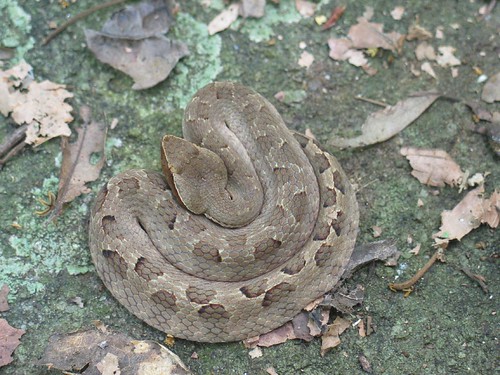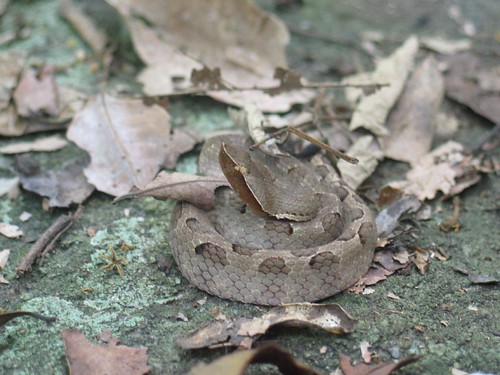Nuwan jumped off the tree that he had just tied a yellow ribbon to, marking one of our research sites and landed lightly on the rock. He looked at his feet, looked at me initially with no indication that anything was amiss but a split second later his countenance changed. Dare I say he went a bit pale and in rapid succession he did a double take towards his feet and daintily but adroitly stepped aside.
Of course not being one to be fazed by anything, especially anything reptilian in nature, Nuwan excitedly beckoned me over to show me what he had almost landed on. On the rock, amidst the leaf litter lay a perfectly camouflaged, snake. Nuwan’s foot had landed a mere two inches away from its head but it hadn’t moved an inch as it lay there, the pointed snout of its viper head resting on its coils.

We identified the snake quite easily as a Merrem’s Hump Nosed Viper, elegantly known as Hypnale hypnale in Latin and the Kunakatuwa in Sinhala. It was a beautiful specimen of what we at the time thought was a relatively mildly poisonous viper. Of course if Nuwan had been bitten it would have gotten complicated as we were a couple of kilometers out in the jungle down a very steep slope in thorny intermediate jungle. Rather spine tinglingly, I found out many moons later that according to two gentlemen by the name of Kularatne & Ratnatunge (1999) in a poetically titled article ‘Severe systemic effects of Merrem’s hump-nosed viper bite’ that the venom can cause acute renal failure and bleeding disorders.

Thankfully at the time we were ignorant of these dangers and we simply took some pictures, patted the viper lovingly on the head (I jest!) and made our way back to the research site, being extra mindful of where we kept our feet.
3 comments:
Good pictures and description. Kunakatuwa is a quite common poisonous snake found mainly in low country of Sri Lanka.
I have seen this type many a times in Gampaha distric and once survived similar near 'Stepping on Snakes' incident in Mandaramnuwara off Padiyapelella.
He's bloody lucky. I was stung by some sort of viper a while ago and almost died. fortunately(?) for me it was a juvenile and didn't pack as much punch.
Nuwan's one lucky guy. Wow! :O
Post a Comment